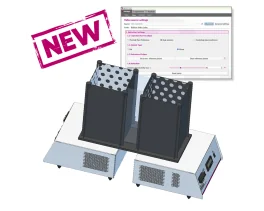Authors
Ciobanu L, Solomon E, Pyatigorskaya N, Roussel T, Le Bihan D, Frydman L
Lab
NeuroSpin, Commissariat à l'Energie Atomique et aux Energies Alternatives, Gif-sur-Yvette, France.
Journal
Neuroimage.
Abstract
This manuscript examines the origins and nature of the function-derived activation detected by magnetic resonance imaging at ultrahigh fields using different encoding methods. A series of preclinical high field (7 T) and ultra-high field (17.2 T) fMRI experiments were performed using gradient echo EPI, spin echo EPI and spatio-temporally encoded (SPEN) strategies. The dependencies of the fMRI signal change on the strength of the magnetic field and on different acquisition and sequence parameters were investigated. Artifact-free rat brain images with good resolution in all areas, as well as significant localized activation maps upon forepaw stimulation, were obtained in a single scan using fully refocused SPEN sequences devoid of T2* effects. Our results showed that, besides the normal T2-weighted BOLD contribution that arises in spin-echo sequences, fMRI SPEN signals contain a strong component caused by apparent T1-related effects, demonstrating the potential of such technique for exploring functional activation in rodents and on humans at ultrahigh fields.
Source :

 Pain - Thermal Allodynia / Hyperalgesia
Pain - Thermal Allodynia / Hyperalgesia Pain - Spontaneous Pain - Postural Deficit
Pain - Spontaneous Pain - Postural Deficit Pain - Mechanical Allodynia / Hyperalgesia
Pain - Mechanical Allodynia / Hyperalgesia Learning/Memory - Attention - Addiction
Learning/Memory - Attention - Addiction Physiology & Respiratory Research
Physiology & Respiratory Research











![Dynamic Weight Bearing 2.0 – Postural Module [Add-on]](https://bioseb.com/733-home_default/dynamic-weight-bearing-20-add-on-postural-module.jpg)
























 Pain
Pain Central Nervous System (CNS)
Central Nervous System (CNS) Neurodegeneration
Neurodegeneration Sensory system
Sensory system Motor control
Motor control Mood Disorders
Mood Disorders Other disorders
Other disorders Muscular system
Muscular system Joints
Joints Metabolism
Metabolism Cross-disciplinary subjects
Cross-disciplinary subjects CONFERENCES & MEETINGS
CONFERENCES & MEETINGS